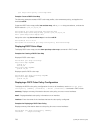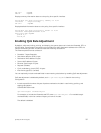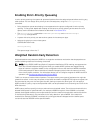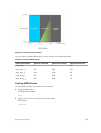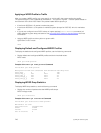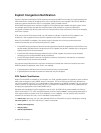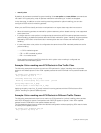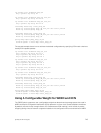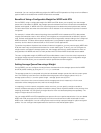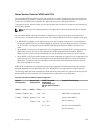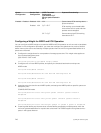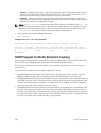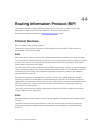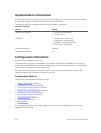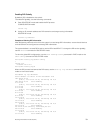thresholds. You can configure different weights for WRED and ECN operation to finely tune how different
types of traffic are handled when a WRED threshold is exceeded.
Benefits of Using a Configurable Weight for WRED with ECN
On the Z9500, using a configurable weight for WRED and ECN allows you to specify how the average
queue size is calculated. In WRED, the average queue size determines when a threshold is exceeded and
packets are dropped; in WRED with ECN, the average queue size determines when packets are marked
for later transmission and when the transmission rate is reduced on an interface during times of network
congestion.
For example, in a best-effort network topology that uses WRED with instantaneous ECN, data packets
may be transmitted at a rate in which latency or throughput are not maintained at an effective, optimal
level. Packets are dropped when the network experiences a large traffic load according to the configured
WRED thresholds. This best-effort network deployment is not suitable for applications that are time-
sensitive, such as video on demand (VoD) or voice over IP (VoIP) applications.
To resolve the problem of packet loss at times of network congestion, you may need to apply WRED with
ECN and more finely tune packet transmission for certain traffic types. To do so, you can configure the
weight used to calculate the average queue size; the average queue size is used to determine when to
drop packets with WRED and when to mark packets with ECN when WRED thresholds are exceeded.
The user-configurable weight in WRED and ECN provides better control in how the switch responds to
congestion before a queue overflows and packets are dropped or delayed. Using a configurable weight
for WRED and ECN allows you to customize network performance and throughput.
Setting Average Queue Size using a Weight
On the Z9500, you can configure the weight factor that determines the average queue size for WRED
and ECN packet handling by using the wred weight command.
The average queue size is computed using the last calculated average-queue size and the current queue
size. The following is the formula to calculate the average queue size: average-queue-size (t+1) =
average-queue-size (t) + (current-queue-length - average-queue-size (t))/2^N
where t is the time or the current instant at which average queue size is measured, t+1 is the next
calculation of the average queue size, and N is the weight factor.
In a topology in which network congestion varies over time, you can specify a weight to enable a
smooth, seamless averaging of packets to handle the bursty nature of packets based on the previous time
sampling performed. You can specify a weight value for front-end and backplane ports separately. The
range of weight values is from 0 to 15.
You can enable WRED with ECN capabilities per queue to fine-tune packet transmission. You can disable
WRED with ECN per queue while configuring the minimum and maximum buffer thresholds for each
WRED color-coded profile. You can configure the maximum drop-rate percentage for yellow and green
profiles. You can configure these parameters for both front-end and backplane ports.
744
Quality of Service (QoS)



